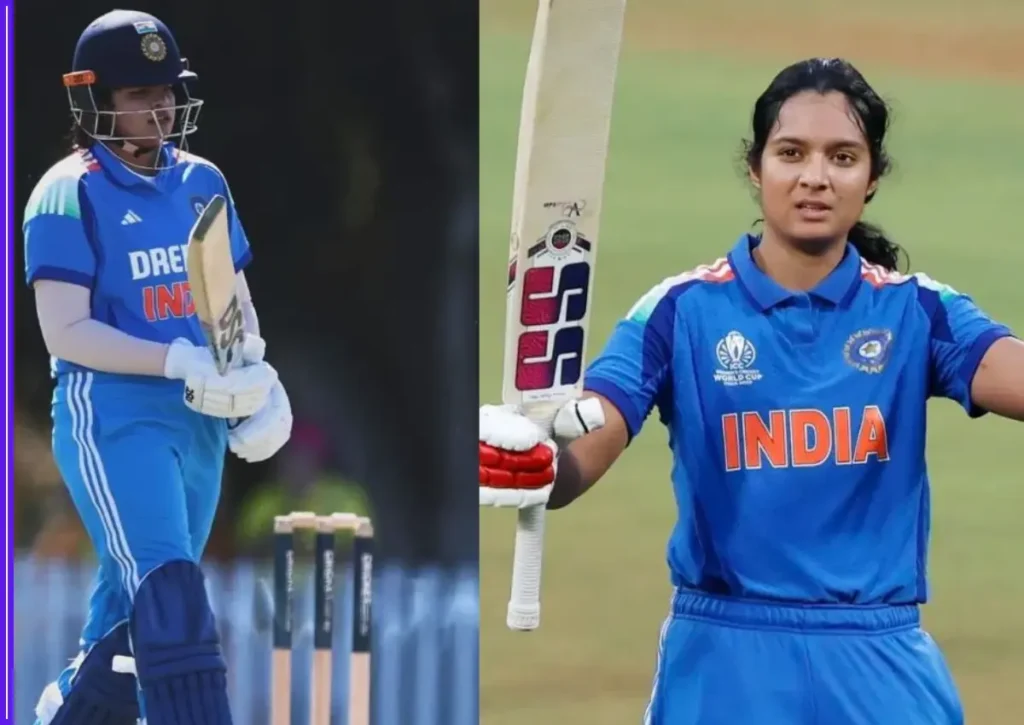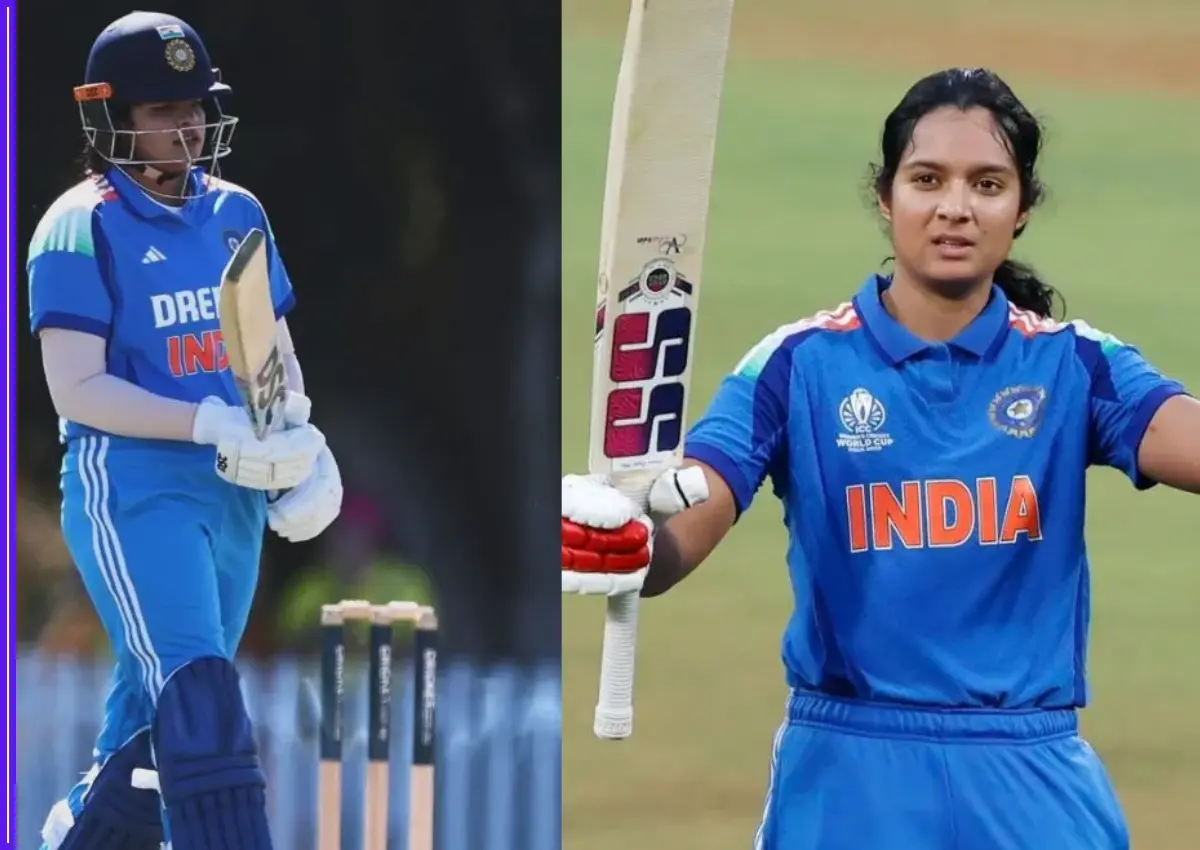India has made a last-minute change to its squad for the 2025 ICC Women’s ODI World Cup semifinal against Australia, bringing back aggressive opener Shafali Verma in place of injured top-order batter Pratika Rawal. The decision, confirmed by the Board of Control for Cricket in India (BCCI) and approved by the ICC’s Event Technical Committee late Monday, comes as India prepares for one of its biggest matches of the tournament.
Pratika Rawal ruled out with ankle injury
Pratika Rawal, who had been among India’s most consistent batters in the competition, sustained an ankle injury during India’s final league game against Bangladesh in Navi Mumbai. Fielding near the boundary, she twisted her ankle awkwardly while attempting to save a boundary in the 37th over. Initial scans revealed ligament damage, ruling her out for the remainder of the tournament.

The 25-year-old right-hander has been a standout performer this World Cup, scoring 308 runs in six innings at an average above 50. Her partnership with Smriti Mandhana at the top helped India secure key wins, including a crucial 8-wicket victory over New Zealand.
Shafali Verma returns to the ODI setup
In her place, India has recalled Shafali Verma, the explosive opener known for her fearless stroke play and ability to dominate the powerplay. Verma, 21, was not part of the original World Cup squad after being dropped earlier this year due to inconsistent form. However, her impressive domestic season — where she scored back-to-back hundreds in the Senior Women’s Challenger Trophy — caught the selectors’ attention.
This call-up marks Verma’s first ODI appearance for India since October 2024. Team sources suggest her inclusion was based on both experience and her potential to deliver quick starts against a strong Australian bowling unit.
Selection committee statement
The Indian selection panel, in an official release, said:
“Following the medical assessment of Pratika Rawal, the BCCI Medical Team confirmed her unavailability for the remainder of the ICC Women’s ODI World Cup 2025. The Event Technical Committee has approved Shafali Verma as her replacement.”
The statement added that the decision was made “in consultation with the team management, keeping in mind tactical balance and top-order reinforcement.”
High-stakes semifinal ahead
India’s semifinal clash against Australia, scheduled for October 30 in Mumbai, is expected to draw a packed crowd. The two sides have faced off in several high-pressure knockout games in recent years, with Australia holding a slight edge in head-to-head encounters.
For India, Verma’s inclusion adds a new layer of unpredictability. Known for her aggressive approach, she is expected to open with Smriti Mandhana, forming one of the most attacking pairs in women’s cricket.
“Shafali brings a different energy to the side. She can turn the game around in the first ten overs,” a member of India’s coaching staff told reporters. “We’ll back her natural instincts, but she’s also worked on her shot selection and composure.”
Balancing aggression with stability
While Verma’s return brings excitement, it also poses tactical challenges. Rawal’s calm temperament often balanced Mandhana’s flair, providing stability in pressure situations. The new combination will be tested against Australia’s disciplined pace attack led by Megan Schutt and Ellyse Perry.
Cricket analyst Anjum Chopra noted, “Pratika’s injury is unfortunate, but Shafali’s inclusion gives India a chance to play bold cricket. If she clicks early, India can set or chase targets more comfortably.”
Australia wary but respectful
Meanwhile, Australia’s captain Alyssa Healy acknowledged the change but maintained that her team remains focused on its own plans.
“Shafali is a dangerous player; she’s hurt us before. But our strategy won’t change — disciplined bowling and sharp fielding will be key,” Healy said at a pre-match press briefing.
Australia topped the group stage, while India qualified second, making this semifinal a clash between two of the tournament’s most consistent teams.
India’s road to the semifinals
India’s campaign so far has been marked by disciplined bowling and strong top-order batting. Skipper Harmanpreet Kaur and vice-captain Smriti Mandhana have led from the front, while spinners Deepti Sharma and Rajeshwari Gayakwad have been crucial in middle overs.
The Rawal-Mandhana opening partnership had been central to India’s run, providing starts above 50 in five of six games. Rawal’s injury means India will need to adapt quickly, but team sources say morale remains high.
“Everyone’s motivated. Pratika’s injury was a blow, but she’s spoken to the team, wished us luck, and told Shafali to go out there and play fearlessly,” skipper Harmanpreet said in a statement.
Verma’s mindset and preparation
Sources close to the team revealed that Verma was in constant touch with batting coach Hrishikesh Kanitkar, practicing in Bengaluru before being called up. “She’s been working on rotating strike and improving her shot timing. Her confidence is back,” one official said.
Verma’s recent domestic form supports that claim — 372 runs in five innings at a strike rate of 128, including a match-winning 91 in the Women’s Challenger Trophy final.
What lies ahead
The semifinal will test India’s ability to adapt under pressure. If Verma and Mandhana provide a solid start, India’s middle order — with Harmanpreet, Jemimah Rodrigues, and Deepti Sharma — has the firepower to capitalize. The bowling department, led by Pooja Vastrakar and Renuka Thakur, has been India’s strength, consistently defending totals and striking early.
For Australia, the key will be neutralizing Verma’s aggression early and applying pressure on India’s middle order.
Closing note
As India faces Australia once again in a World Cup knockout, all eyes will be on Shafali Verma’s return. The youngster, once hailed as the future of Indian batting, now carries the weight of expectation in one of the biggest matches of her career.
If her fearless approach clicks, India could be on course for its first Women’s ODI World Cup final appearance since 2017. But for now, the team’s focus remains simple — adapt, believe, and play their brand of cricket.










